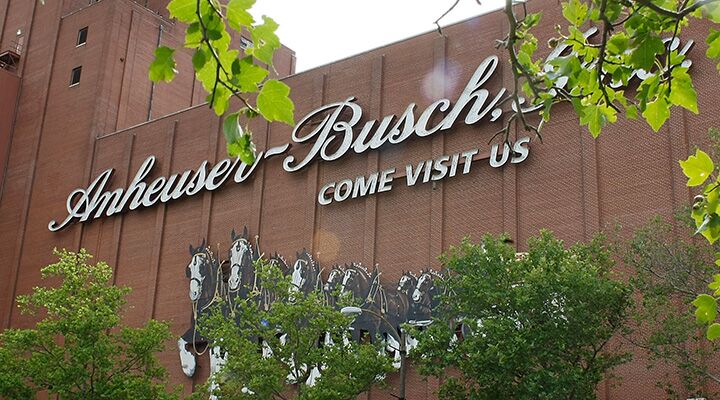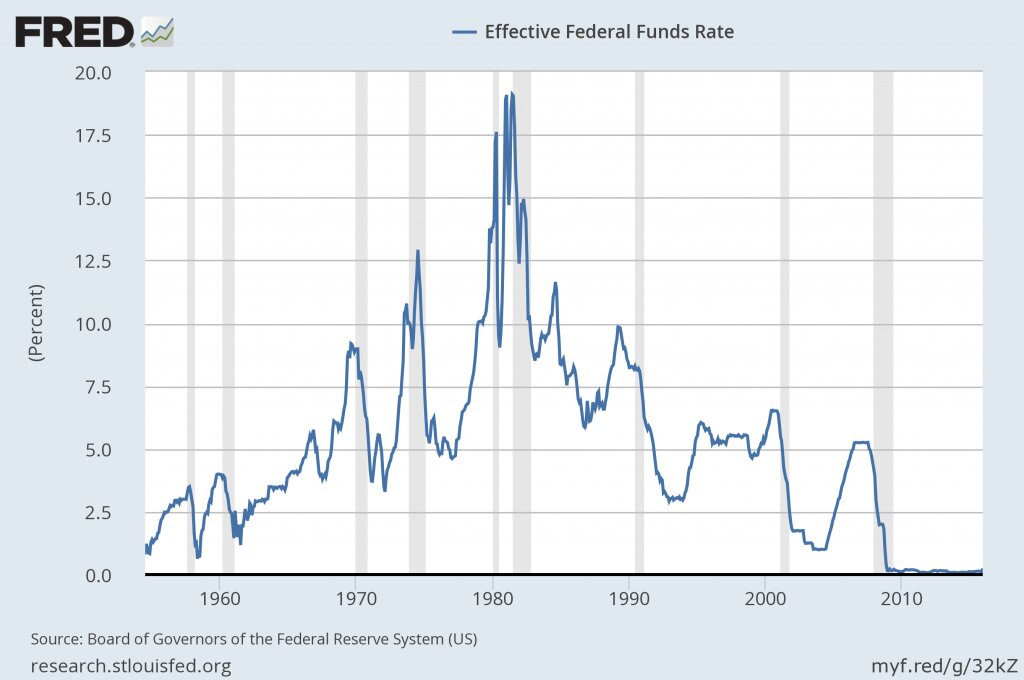
Drunk on Debt: The Anheuser-Busch InBev/SABMiller Takeover
The makers of Budweiser beer just set a record. In November, they secured a $75 billion loan to buy rival sabMiller. It is the biggest corporate loan in the history of the world. And it may signal a dangerous event for the global economy.
Last year, for the first time ever, global mergers and acquisitions surpassed the $5 trillion mark. It was the third consecutive year of increases—up a whopping 37 percent from 2014, according to Dealogic. The number of deals valued at $10 billion or more was double 2014’s level. And the number of global jumbo bonds financing these deals also hit records last year—up 48 percent from 2014.
Corporate America led the charge. Egged on by artificially appealing low interest rates and crowds of investors clamoring for yield, American companies consumed the highest share of global mergers and acquisitions ever.
But for those still with unimpaired vision, these signs are very worrisome. We’ve had a corporate merger spree not that long ago—two of them actually. They both ended the same way, too—and it wasn’t with clanking beer mugs and cheers.
Precedent
For those who can still remember it, in 2006 at&t bought BellSouth for $84 billion in stock. In 2007, the Royal Bank of Scotland (rbs) and other foreign banks purchased abn amro Holding for $100 billion. Just a few months after that, shareholders took over Philip Morris International for $107 billion. At the time, these were three of the top seven corporate buyouts in history.
Only seven months later, investment bank Bear Stearns collapsed, setting off a panic that left Wall Street a total mess.
The same types of corporate excesses preceded the dotcom crash too.
Of the 15 biggest corporate mergers and acquisitions of all time, eight came within the two years before the crash in 2000. The second-biggest deal ever—the $185 billion Vodafone acquisition of Mannesmann—came just four months before the crash. The biggest deal ever, the $186 billion aol-Time Warner merger, happened less than three months before markets tumbled.
These corporate superstars were partying right up to the day the market tanked.
The Debt Party Continues
“Anheuser-Bush InBev’s ability to raise $75 billion in the loan marketsin the space of a few weeks shows that banks are still willing to support top-class borrowers in record amounts,” Nicholas Clark, a partner at Allen & Overy’s international law firm in London, said. “This is the largest commercial loan in the history of the global loan markets, far surpassing pre-crisis values” (emphasis added throughout). It is part of a $108 billion deal. At a dollar per bottle, that is more than 14 bottles for every person on Earth.
So the debt party continues—even as the markets wobble.
“[Y]ou don’t have to be an expert in the beer industry to realize that these rollups were mainly the product of cheap debt,” says David Stockman, Wall Street insider and director of the Office of Management and Budget under former U.S. President Ronald Reagan. “The merger deal in question would thus double the new company’s debt in order to destroy several thousand breadwinner jobs. You think that might suggest that there are some bubbles out there after all?”
But what happens if the debt kegs run dry?
Investors are already feeling jittery. In August, market volatility shot up so high that for a brief period, it blew out the Chicago Board Options Exchange Volatility Index. This is the index often referred to as the fear gauge. The computer algorithms couldn’t handle the unprecedented volume as the index tripled.
Somebody—probably a lot of people—are going to be cut off. And Wall Street is just now beginning to realize it.
A Revealing Statement
Stanley Druckenmiller, one of the most successful investors of all time, said in April: “This is the first time in 102 years, A), the central bank bought bonds and, B), that we’ve had zero interest rates, and we’ve had them for five or six years. … To me it’s incredible.”
Never before has America’s central bank so overtly manipulated markets. Never before has America printed up so much money from nothing. Never before have interest rates been artificially suppressed so low and for so long.
Never have markets so hinged on the whims of central planners.
Better get a drink while it lasts.
Former Federal Reserve Bank of Dallas Chairman Richard Fisher warned on January 5 that this liquidity might soon be in short supply. He told cnbc, “What the Fed did, and I was part of that group, is we front-loaded a tremendous market rally … in order to accomplish a wealth effect.”
This was an incredibly revealing statement. It confirmed that quantitative easing—money printing and interest-rate manipulation—was directly responsible for boosting prices of risk assets like stocks and bonds.
In other words, the economic rebound from the 2009 financial collapse was not due to any fundamental improvement in the economy—but to artificial, temporary stimulation. It was due to debt! And the main beneficiary of the central-bank stimulus wasn’t the average American, but the average stock-market investor.
And now Fisher is warning that markets are both “very richly priced here”—due to the Federal Reserve’s engineered six-year bull market—and vulnerable to “significant downside.”
After 30 years of generally falling interest rates, and seven consecutive years of zero-bound interest rates, the whole economy is dependent on something that can’t possibly continue: artificially low interest rates and continually expanding debt loads.

Debt Dependency Can’t Last
On December 16, the Federal Reserve was finally forced to raise interest rates. It was only by a quarter of a percent—but it is the direction that is important. Interest rates are rising again. Debt—the alcohol fueling corporate America’s animal spirits—is becoming more expensive.
And look what happened to the markets. The Dow Jones Industrial Average, which tracks America’s most important companies, fell 8 percent in a single month. The S&P 500 is down. The nasdaq is down. Oil is down. Virtually all commodities are down. Virtually every currency in the world except the dollar is down.
Granted, there are other issues at play. But the fact that the world’s largest economy is so dependent on debt—and that debt is becoming more expensive—is a huge factor driving markets down.
Investors should be afraid.
“In a crowded hall, exit doors are small,” the rbs warned in a note to clients in January. Investors need to brace for a “cataclysmic year,” it said. Market indicators are flashing warnings akin to months prior to the Lehman crisis in 2008.
The bank warned that if the debt kegs run dry, it will lead to a global deflationary crisis. Major stock markets could fall by a fifth, and oil may plummet to $16 a barrel. The bank recommends that clients look to the dollar for safety.
But will the dollar really protect people?
“We are already in or rapidly heading into a recession,” says Euro Pacific Capital’s Peter Schiff. “Corporate earnings are already falling. Stocks are way overvalued, and companies are way over-leveraged.”
“I do think the Fed is going to save the market,” says Schiff, who was one of the few analysts who correctly saw the 2008 crisis coming, “but sacrifice the dollar in the process.”
What If the Dollar Tanks?
If the markets tumble, the Fed will print money and flood the market with debt, says Schiff. And what was a deflationary crisis will quickly turn into an inflationary one in which the value of the dollar is destroyed.
“So the real crisis that is coming is not going to be a repeat of the financial crisis,” says Schiff, “but something even worse—a dollar crisis and even a sovereign debt crisis.”
This next economic collapse is going to be much harder on Americans because debt levels are so much higher. Anheuser-Busch InBev/sabMiller may do fine for a while since consumers tend to embrace vices and the small pleasures in hard times.
But the writing is on the beer billboard for all to see.
anheuser-busch: king of debtors. this debt’s for you.
it’s miller/massive debt time.
Or Wall Street’s favorite: keep calm and drink on.
U.S. non-financial corporate debt hit $5.4 trillion at the end of 2015. That’s up 59 percent from the start of the 2008 economic crash. But don’t worry about debt; just like Guinness, it’s “The Most Natural Thing in the World.” Labatt confirms: Good Things Brewing. Relax a Little; Rolling Rock Is Still Free Flowing. Enjoy a Pabst—It’s Blended, It’s Splendid. Have a Bud Light and Hit Your Refresh Button. It Doesn’t Get Any Better Than This! Turn It Loose! It’s Brewed With Pure Rocky Mountain Spring Water.
But catchy slogans don’t change reality: The high life is just about over. Life beckons. Choose wisely. The next crisis is coming.
